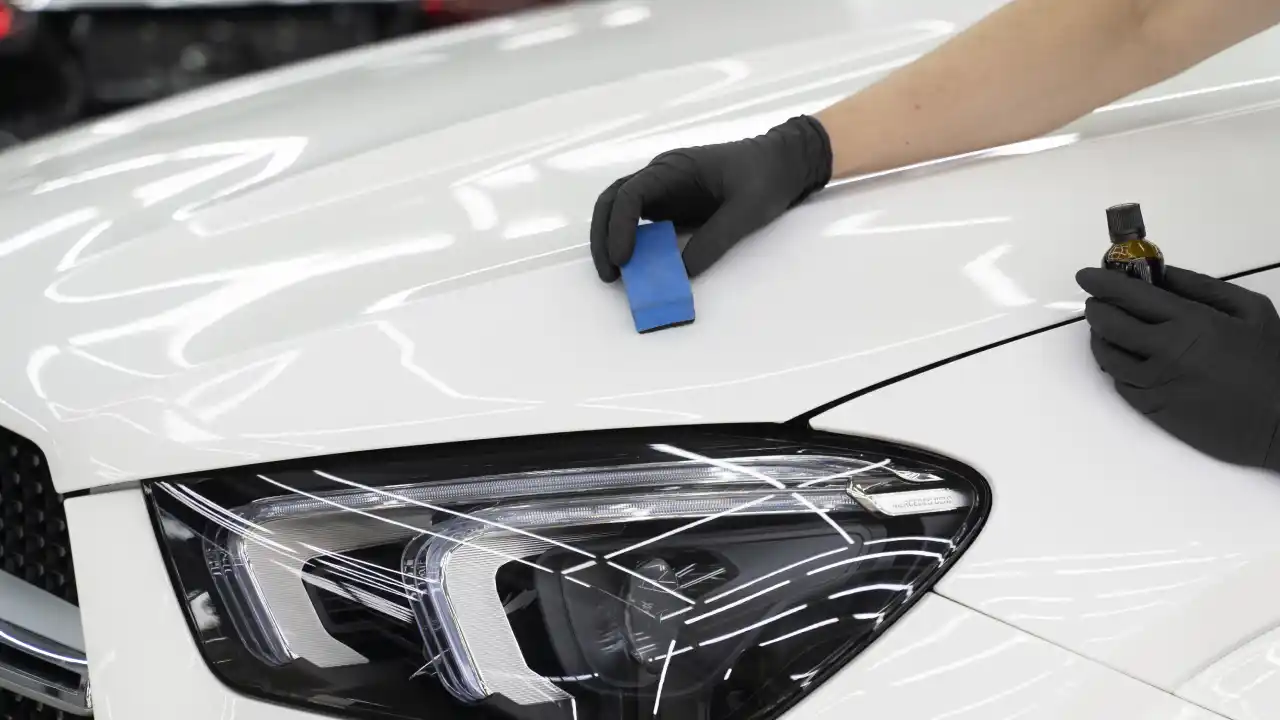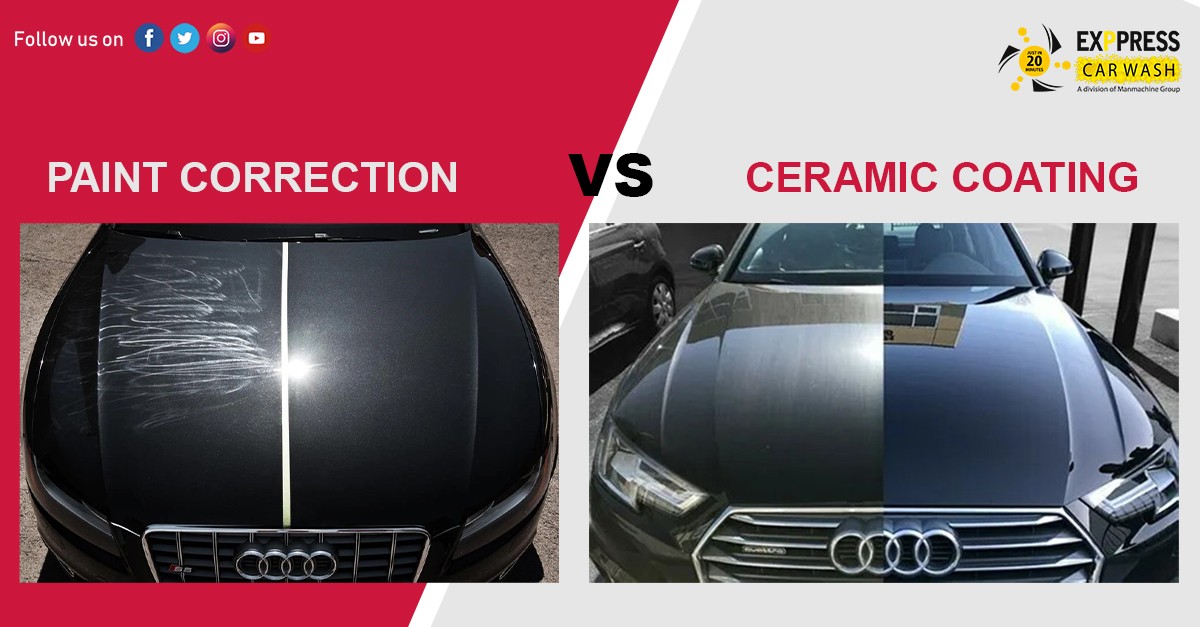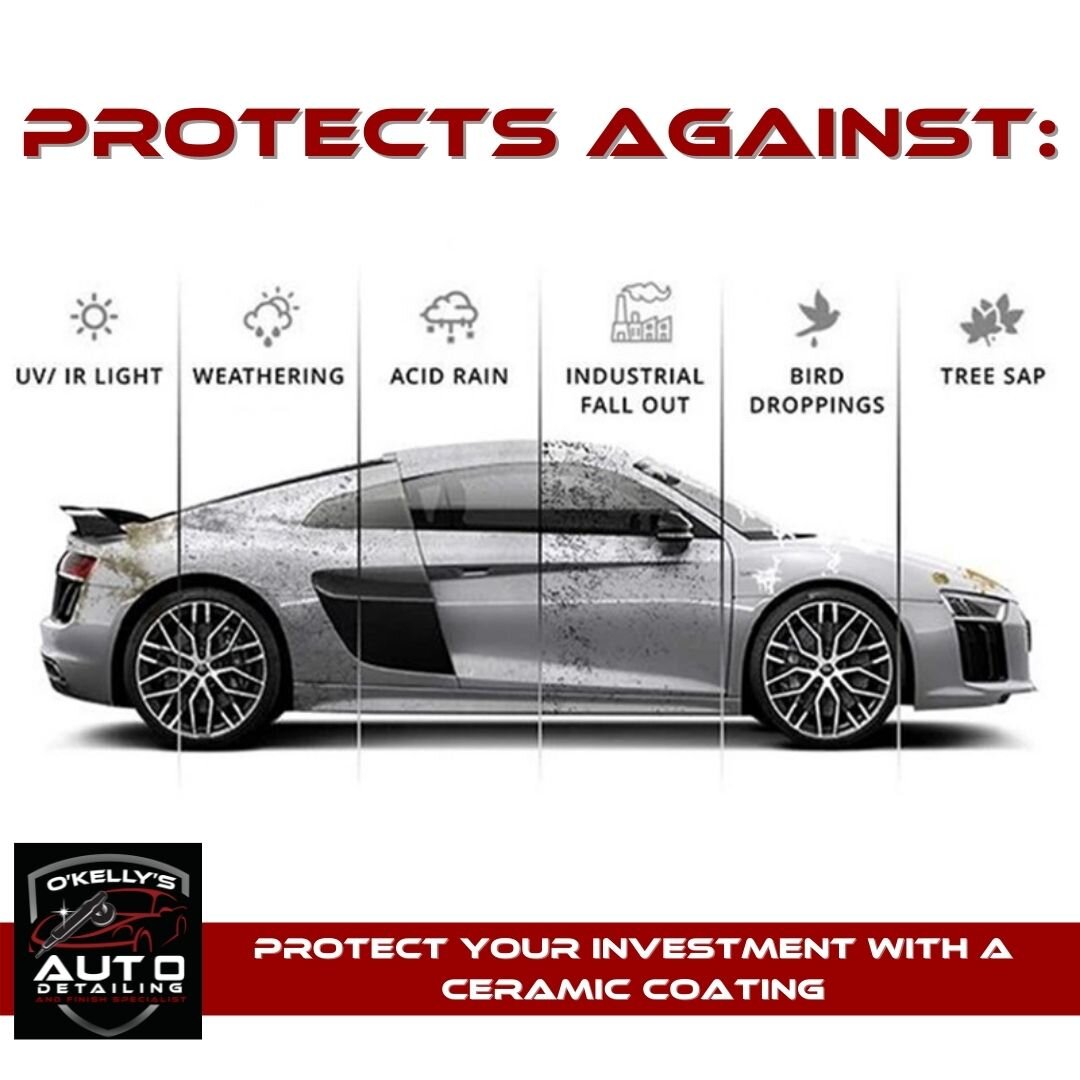The Function of Ceramic Finish in Securing Your Cars and truck's Paint From Environmental Damage
Ceramic coating has become a sophisticated remedy for automobile owners seeking to maintain the stability of their lorry's exterior. By developing a robust chemical bond with the paint, this advanced modern technology provides a formidable obstacle against numerous environmental threats, such as UV rays, acid rainfall, and contaminants. Nonetheless, comprehending the comprehensive advantages and the complexities of the application procedure is vital for maximizing its performance. As we discover the nuances of ceramic finish, it becomes obvious that the choice to execute this safety step can substantially affect your car's long life and aesthetic.
What Is Ceramic Finish?
Ceramic layer is an innovative fluid polymer put on the external surfaces of an automobile, made to provide a resilient layer of security for the paint. This cutting-edge remedy creates a chemical bond with the vehicle's factory paint, creating a durable and hydrophobic shield. The finish contains nanoparticles that complete the tiny blemishes in the paint, causing a smooth surface area that boosts beam and gloss.
Typically, ceramic coverings are available in various formulations, permitting various degrees of defense and long life. While some items can last for a number of months, others use security for a number of years, depending on the density of the application and environmental factors. The application process calls for careful prep work, including washing, sanitizing, and brightening the car's surface to make certain ideal attachment of the finish.

Advantages of Ceramic Finish
One of the key benefits of applying a ceramic layer is the outstanding security it offers to vehicle paint. This sophisticated coating develops a resilient layer that guards the car's surface area from a range of ecological dangers, including UV rays, acid rainfall, bird droppings, and tree sap. By providing this durable defense, ceramic finishes considerably lower the danger of fading and etching, maintaining the automobile's visual charm with time.
In addition to defense, ceramic coverings are renowned for their hydrophobic properties, which push back water and dirt, making it much easier to maintain a clean lorry. This self-cleaning effect minimizes the frequency of washing, conserving both time and sources. Additionally, ceramic coatings improve the deepness of the paint's gloss, resulting in a refined and vivid look that raises the total look of the automobile.
One more noteworthy advantage is the longevity of ceramic layers. Unlike standard waxes or sealants that call for regular reapplication, ceramic coatings can last several years, supplying a cost-effective solution for car proprietors seeking lasting defense. On the whole, purchasing ceramic finish brings about improved toughness, reduced upkeep, and continual aesthetic appeal for automobile paint.
How Ceramic Finish Functions
A ceramic coating operates through a chemical bonding process check this site out that creates a safety layer on the lorry's paint surface area. This cutting-edge option uses sophisticated nanotechnology, where microscopic particles of silica are put on hold in a fluid type - ceramic coating. Upon application, these particles bond with the factory paint, creating a hydrophobic and long lasting layer that improves the car's surface
The major element of ceramic finishes, silicon dioxide (SiO2), contributes to the covering's strength and strength. When treated, the finishing transforms right into a difficult, glass-like finish that shields the paint from ecological impurities such as dirt, UV rays, bird droppings, and tree sap. This molecular bond results in a surface area that is not just resistant to scrapes yet likewise simpler to clean, as dirt and crud are much less likely to stick.
In addition, the hydrophobic homes of ceramic finishings cause water to grain and slide off, minimizing the possibilities of water spots and natural resource. This protective obstacle successfully prolongs the life of the paint and keeps the automobile's aesthetic allure, using automobile owners a long-lasting remedy for paint defense.
Application Process of Ceramic Coating
When considering the application of ceramic covering, preparation is essential to accomplishing ideal results. Any type of flaws or scratches ought to be this contact form dealt with at this stage, as the finishing will certainly bond with the surface area beneath.

Ceramic finish is then applied in tiny sections, generally making use of an applicator pad. The automobile ought to be left to heal in a controlled environment to permit the finishing to fully bond with the paint.
Long-Term Upkeep and Care
Attaining a successful ceramic coating application establishes the foundation for long-lasting protection, yet proper upkeep is important to maintaining its advantages. Normal washing is essential; utilizing a pH-neutral vehicle hair shampoo will assist maintain the finish's integrity without creating damage. Stay clear of automated automobile cleans that use unpleasant materials, as they can jeopardize the coating's surface.

Moreover, using a ceramic coating maintenance spray can improve the existing layer, giving an additional increase in defense and sparkle. It's recommended to do this every 3 to 6 months, depending on environmental exposure.
Finally, parking in shaded areas or using cars and truck covers can protect against prolonged direct exposure to hazardous UV rays and environmental pollutants, additionally expanding the life of your ceramic layer. By adhering to these maintenance practices, you can ensure your car's surface stays secured and next visually appealing for many years to find.
Final Thought
In recap, ceramic finish offers as a crucial safety procedure for vehicle paint, properly securing lorries from a variety of ecological hazards. Its capacity to develop a durable hydrophobic obstacle not only enhances aesthetic appeal yet additionally dramatically lowers the regularity and strength of maintenance required. The lasting nature of this sophisticated polymer underscores its value in maintaining lorry integrity and look, inevitably adding to a much more long lasting and visually enticing vehicle coating.
Ceramic finish is a sophisticated liquid polymer applied to the external surface areas of a car, designed to give a long lasting layer of security for the paint. Ceramic coverings enhance the deepness of the paint's gloss, resulting in a sleek and vivid appearance that elevates the general look of the vehicle.
A ceramic finishing runs with a chemical bonding process that develops a safety layer on the car's paint surface area.The primary component of ceramic coverings, silicon dioxide (SiO2), adds to the finishing's strength and resilience.In recap, ceramic finishing serves as a crucial protective action for automobile paint, effectively protecting vehicles from an array of environmental dangers.